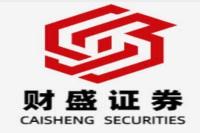Huawei's Trademark Spree: A Deep Dive into the "HarmonyOS" Branding Strategy (Meta Description: Huawei, HarmonyOS, Trademark, Branding, Intellectual Property, Technology, Market Analysis)
Imagine this: You're a giant in the tech world, a brand synonymous with innovation and cutting-edge technology. You've poured years, billions of dollars, and countless hours of sweat and ingenuity into crafting an operating system poised to challenge the global giants. But it's not enough to just build something brilliant; you need to own it. You need to protect your creation, brand it impeccably, and ensure its success in the fiercely competitive global marketplace. That's precisely the situation Huawei finds itself in, and their recent trademark filings for "HarmonyOS" related brands – "HarmonyOS Enjoy," "HarmonyOS Vitality," and "HarmonyOS Audio-Visual" – reveal a sophisticated, multi-faceted branding strategy aimed at dominating not just the OS market, but the entire connected ecosystem. This isn't just about protecting a name; it's about building a brand empire. The stakes are incredibly high, and the implications for the future of the tech landscape are profound. This deep dive will unravel the strategic thinking behind Huawei's move, explore the potential impact on the market, and discuss the broader implications for intellectual property protection in the digital age. Buckle up, because this is going to be a fascinating ride! We're going beyond the simple news headline and delving into the strategic nuance, the market analysis, and the implications for both Huawei and its competitors. Get ready for an insightful exploration of the power of branding in the tech world!
Huawei's HarmonyOS Trademark Strategy: A Comprehensive Analysis
Huawei's recent trademark applications for "鸿蒙智享" (HarmonyOS Enjoy), "鸿蒙活力" (HarmonyOS Vitality), and "鸿蒙影音" (HarmonyOS Audio-Visual) aren't random acts; they represent a calculated, multi-pronged approach to solidifying their position in the rapidly evolving tech landscape. This isn't simply about registering names; it's a strategic maneuver designed to protect their intellectual property (IP) and expand their market dominance. The choice of these specific brand extensions reveals a deep understanding of market segmentation and the potential for future product diversification.
Let's break down the significance of each trademark:
-
HarmonyOS Enjoy: This suggests a focus on user-friendliness, accessibility, and a positive user experience. It targets a broader market segment, potentially including users less technically inclined. This is a smart move, as broader market penetration is crucial for long-term success.
-
HarmonyOS Vitality: This points towards a commitment to innovation, dynamism, and a forward-looking approach. This branding resonates with a younger, more tech-savvy audience, emphasizing the vibrant and ever-evolving nature of the OS and its ecosystem.
-
HarmonyOS Audio-Visual: This indicates Huawei's ambition to dominate the multimedia sector. This suggests plans to integrate the HarmonyOS into a wide range of audio-visual devices, from smart TVs and speakers to headphones and other peripherals. This vertical integration is a key strategy for market leadership.
These trademarks, applied across categories like advertising, communications, and website services, signify Huawei's intention to build a comprehensive and tightly controlled ecosystem around HarmonyOS. This strategic move reflects a broader trend in the tech industry, where companies are increasingly focusing on building closed-loop ecosystems to enhance user loyalty and control the user experience.
The Importance of Intellectual Property Protection
The act of applying for these trademarks underscores the critical importance of intellectual property (IP) protection in the tech industry. In a world saturated with similar products and services, a strong IP portfolio is not just a defensive measure; it's a strategic asset that provides a competitive edge. Huawei understands this perfectly. By proactively securing these trademarks, they are safeguarding their investment and preventing competitors from leveraging similar branding to create confusion in the market. This proactive approach minimizes the risk of legal battles and brand dilution down the line. The legal protections afforded by these trademarks will be invaluable in protecting Huawei’s investment and brand reputation. It's a smart, strategic move that shows a deep understanding of the competitive landscape.
Market Analysis and Competitive Landscape
Huawei's move is not just reactive; it’s a proactive measure designed to position HarmonyOS as a serious contender in the global operating system market, currently dominated by Google's Android and Apple's iOS. This requires a multifaceted approach, and their trademark strategy is a significant component. By securing these broader brand extensions, Huawei is preemptively staking its claim across various sectors, leaving little room for competitors to encroach on their territory. This strategic foresight is essential for building a sustainable and thriving ecosystem. The success of HarmonyOS hinges not just on technical capabilities, but also on a strong and consistent brand identity that resonates with consumers.
The Broader Implications for the Tech Industry
Huawei's aggressive trademark strategy has implications that extend beyond its own ambitions. It highlights the ongoing battle for market share in the ever-evolving tech landscape and underscores the growing importance of intellectual property rights in the digital world. This assertive approach might prompt other tech companies to re-evaluate their own IP strategies, prompting a wave of proactive trademark filings and a sharper focus on brand protection. The move also highlights the strategic importance of creating a unified and consistent brand identity across a range of products and services.
HarmonyOS: A Deep Dive into the Ecosystem
HarmonyOS, at its core, is more than just an operating system; it's a comprehensive ecosystem designed to connect a multitude of devices, from smartphones and tablets to smart home appliances and wearables. This interconnectedness is critical for Huawei's long-term strategy. The trademarks reinforce this interconnected vision, suggesting a future where the HarmonyOS brand encompasses a wide range of products and services, all working seamlessly together. This holistic approach aims to provide users with a unified and intuitive experience across all devices. This integrated approach to technology is a critical differentiator in today's crowded marketplace.
The Future of HarmonyOS
Huawei's recent trademark filings suggest an ambitious roadmap for HarmonyOS. The company is clearly investing heavily in building a robust and comprehensive ecosystem, one that extends beyond the traditional boundaries of mobile operating systems. The success of this strategy will depend on several factors, including the continued development of innovative features, strong partnerships with hardware manufacturers, and effective marketing and distribution strategies. The challenge lies in achieving widespread adoption and building a critical mass of users and developers. However, given Huawei's track record of innovation and its commitment to building a strong brand identity, the future of HarmonyOS appears bright.
Frequently Asked Questions (FAQs)
-
What is HarmonyOS? HarmonyOS is Huawei's proprietary operating system, designed to power a wide range of devices, from smartphones and tablets to smart home appliances and wearables.
-
Why are these new trademarks important? These trademarks protect Huawei's brand and prevent others from using similar names, ensuring brand clarity and preventing market confusion.
-
What is the significance of the different trademark names? Each name targets a specific market segment, reflecting Huawei's strategy to appeal to a broad range of consumers.
-
How does this impact Huawei's competitors? This aggressive trademark strategy puts pressure on competitors, forcing them to re-evaluate their own IP strategies and potentially hindering their ability to enter similar market segments.
-
What are the risks involved in this strategy? The main risk is the potential for legal challenges if the trademarks infringe on existing intellectual property rights. However, given Huawei's careful legal approach, this risk appears minimal.
-
What's the overall goal of Huawei's trademark strategy? Huawei aims to build a strong, recognizable, and protected brand identity for its HarmonyOS ecosystem, maximizing market share and securing its long-term success.
Conclusion
Huawei's recent trademark filings for "HarmonyOS Enjoy," "HarmonyOS Vitality," and "HarmonyOS Audio-Visual" are not mere formalities; they represent a sophisticated, strategically planned maneuver to solidify HarmonyOS's position in the global tech arena. This proactive approach to IP protection, combined with a comprehensive understanding of market segmentation and the power of branding, positions Huawei for significant growth and long-term success in the fiercely competitive world of operating systems and connected devices. The implications extend far beyond Huawei itself, underscoring the growing importance of intellectual property and strategic branding in the digital age. The coming years will be crucial in determining the ultimate success of this ambitious strategy, but one thing is clear: Huawei is playing the long game, and is strategically positioned for a strong run.



